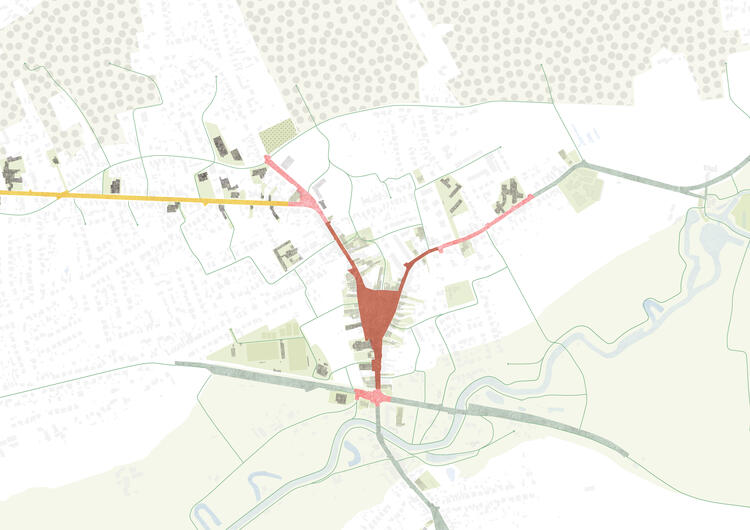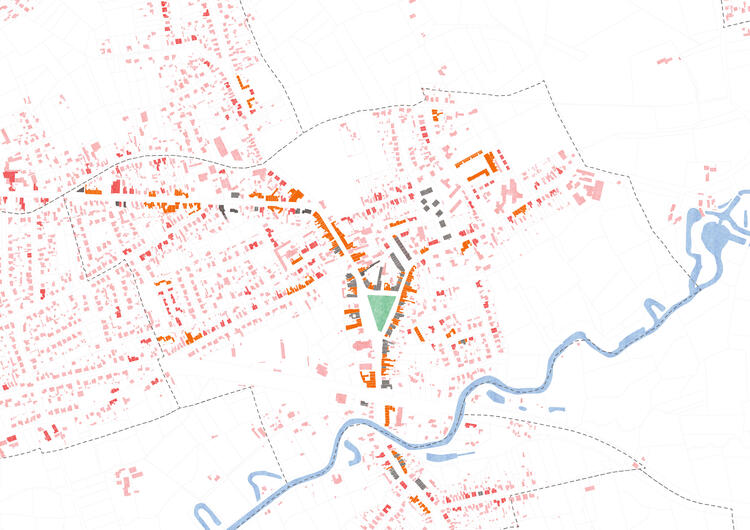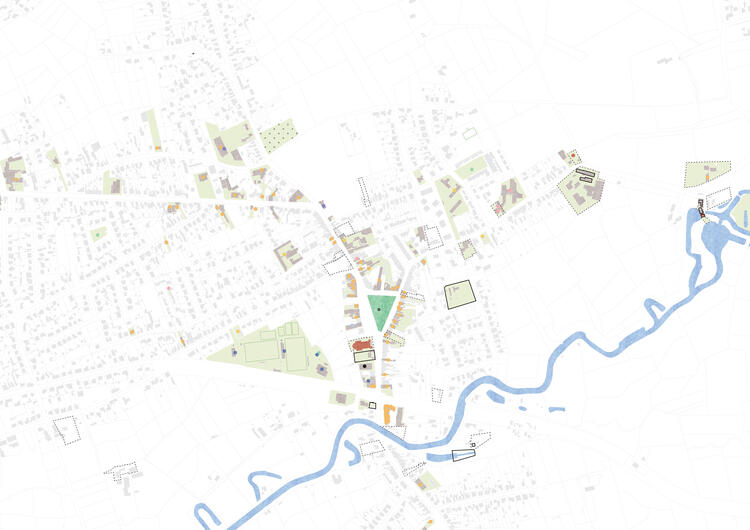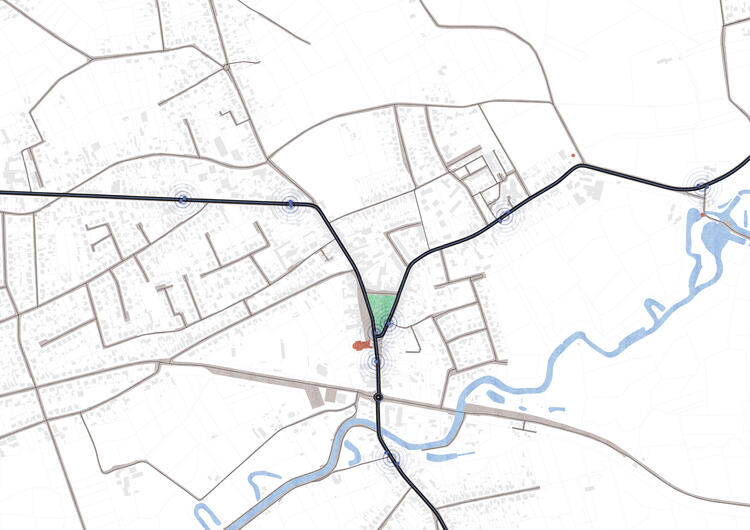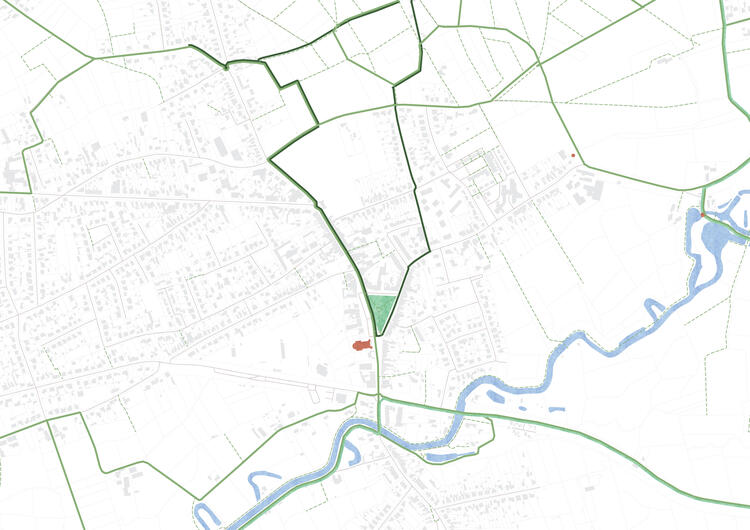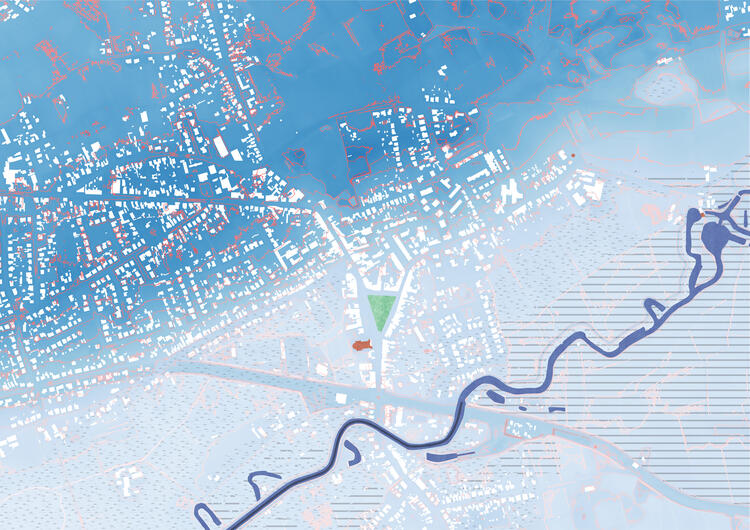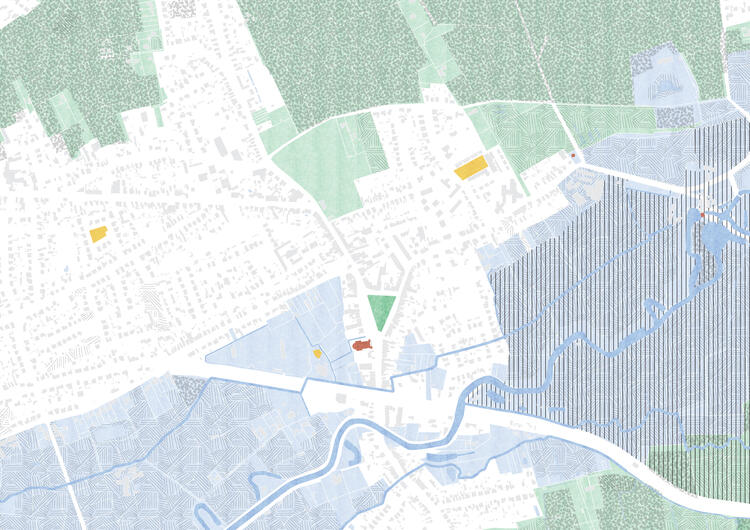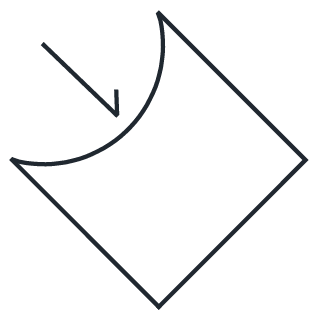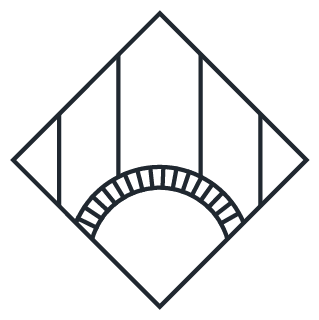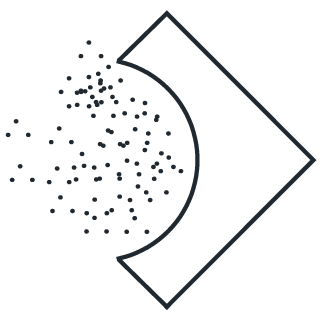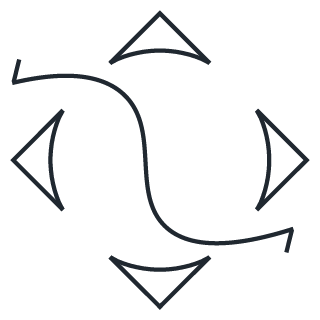Empowering villages to develop advanced spatial policy
POLO Urbanism won a competition to develop an image quality plan for the village cores of Grobbendonk and Bouwel and the main road that links them. Instead of generic renewal tactics, we put forward innovative transformation strategies for a plurality of spatial conditions, drawing inspiration from the richness of traditional village life.
The competition brief asked for a spatial vision outlining development goals and an image quality plan visualising the desired identity of the north-south axis connecting Grobbendonk and Bouwel. But for us this was merely a starting point. We did not just want to deliver a visualisation of the municipality’s spatial ambitions; we also wanted to provide the tools needed to realise them. To this end we devised a complete manual spelling out how to set in motion a gradual transformation of the village.
We first undertook a detailed research of the municipality’s territory; we conducted a series of site visits in the company of academics and local experts; we analysed historical and cartographic sources, including zoning and development plans currently in effect; we listened to the ambitions and aspirations of the authorities, administration and local population.
Consequently we developed a number of “theses” that function as a guideline for future spatial developments in the municipality. Based on these we identify five distinct spatial tissues along the road connecting the two village cores. We capitalise on their respective strengths and address their weaknesses, improving the village’s functionality in a radical reimagination of its built/unbuilt composition, its porosity and its activation. In a co-creation moment with inhabitants and different stakeholders we invited feedback on these aspirational schemes, which are to be a new base for future-oriented interventions and projects along the north-south axis.
Ambitious theses reinforce five characteristic village atmospheres
Bold theses for future development set a shared ambition level. They are based on the specific characteristics of Grobbendonk but also of the Flemish village in general, where we find spatial conditions quite distinct from those in the city. Driven by a certain nostalgia for its unique yet vanishing qualities, we want to write the forward-looking narratives to preserve and update the village’s singular feeling of community.
A first thesis depicts the unique and contrasting identities of the village cores of Grobbendonk and Bouwel as a meaningful quality. Secondly we focus on the innovative building typologies and inclusive programmes needed to sustain a vibrant village life. A third thesis describes the need for a robust and safe mobility spine consisting of two components: one provides a fast and efficient connection while the other offers an alternative scenic route where recreational routes and local links combine on a recovered network of small roads.
Theses four to six advocate the (re)creation of green gates to the surrounding natural landscape, the widespread provision of generous public space and the integration of built and unbuilt spaces with multiple uses. Together these six theses constitute a framework for creating a harmonious and balanced village life that rethinks traditional village qualities in light of a much needed spatial transition.
On the basis of these theses we establish a structure vision for the whole area surrounding the north-south axis, determine a number of strategic zones and describe five image-defining village atmospheres.
We build on the present diversity of ambiences to achieve an intimate and rich village tissue which offers something for everyone, making it more appealing to inhabitants and visitors alike. We investigate the defining properties and embodied potential of the five spatial tissues and propose ways to improve their appearance and overall sustainability. This results in a number of thematic image quality guidelines for built and unbuilt spaces which we have termed “lively village cores”, “friendly village gates”, “inviting landscape gates” and “dynamic main roads”.
Guiding people, politics and spatial transformation
At POLO Urbanism we constantly reflect on how our ambitious plans can be implemented in a practical and pragmatic manner. Responsible and effective spatial policy and guidelines do not just require an inspiring vision, but depend on a strategic battle plan which carefully projects every step needed to achieve results.
The assignment we embarked upon aims at developing robust and inspiring guidelines, both for the spatial transition of the study area and the envisaged quality of its built and unbuilt tissue.
A sustained application of these guidelines towards current and future projects requires political courage and the establishment of precise procedures and instruments. A clear and inspiring communication is paramount to succeeding, inviting all stakeholders, including Grobbendonk’s wider population, to take part in this transformative journey.
Together with a core team of the municipality we are continuously evaluating and revising our strategies to devise a future-oriented village — building up and sharing valuable knowledge along the way.
A Pilot Project
At the request of the municipality POLO Urbanism took on the assignment for the planning of an entire building block and the design of one of its central public spaces in one of the strategic zones we defined. Hence we could showcase how the evocative images and broad ambitions could take shape and how even the wildest dreams can be transformed into reality.
For an unappealing and impenetrable terrain surrounding an existing cultural centre we have set up an interdisciplinary team that will develop a design for intergenerational public space. Through the use of innovative natural play elements within a water retention area, a skate park and different walking routes, we aim to create varied climate robust environments which appeal to a range of endusers.
This case study also underlines the ongoing horizontal development of POLO’s capabilities, allowing us to take on work at different scale levels and showcasing our skills which run the gamut from broad strokes conceptualisation to hands-on implementation.






